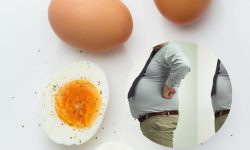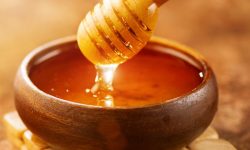Hence, shedding a few pounds and improving the overall health is very important for teens. We have compiled 13 healthy weight loss tips for teens that can help get their health back on track. Scroll down!

1. Ditch The Soda
Sodas contain sugar that exceeds the daily limit of 25 grams. They cause obesity and diabetes. Research group has also found pesticide residues in certain soft drinks/soda. Replace soda with homemade iced tea, lemonade, pulpy ice watermelon and berry juices with mint, lime, and a pinch of pink salt.
2. Avoid Junk Food
Junk foods contain trans fats and saturated fats and are high in calories, salt, and sugar. They can make you gain stubborn fat, which can get difficult to lose later. Hence, it is important to steer clear of junk food if you want to lose weight. Here is how you can start:
- Switch to healthy snacking – Consume baked chips, fruit juices, baby carrots and hummus, cucumber, nuts, and plain popcorn.
- Trade your cold drink for a bottle of detox water, iced tea, or freshly pressed fruit juice.
- Have fruits instead of sweets. If you crave sweets, have fruits instead of ice cream. You can also have a square of dark chocolate (80% or more cocoa content). Low-fat frozen yogurt topped with fresh fruits can be equally tempting and satisfying.
3. Consume More Fiber and Protein
Foods rich in dietary fiber and protein promote satiety and keep your hunger pangs at bay. Dietary fiber also improves digestion by promoting the number and variety of good gut bacteria. Protein prevents lean muscle loss during the weight reduction phase. Here’s what to consume to get enough protein and fiber from food sources:
- Veggies– Spinach, carrot, asparagus, eggplant, okra, lettuce, tomato, cucumber, scallions, cabbage, Chinese cabbage, purple cabbage, bok choy, chard, peas, radish greens, bell pepper, parsley, and cilantro.
- Fruits – Apple, banana, pineapple, peach, pear, orange, tangerine plum, blueberry, strawberry, watermelon, and muskmelon.
- Protein – Egg, fish, tofu, mushroom, lentils, kidney beans, soybeans, black beans, blackeyed peas, garbanzo beans, sprouts, and edamame.
4. Consume Good Fats
Not all fats are bad. The omega-3 fatty acids found in fatty fish, nuts, and seeds are great for weight loss and overall health. The oryzanol in rice bran oil helps lower bad cholesterol. Here’s a list of healthy fats you can consume and avoid:
- Healthy fats to consume –Avocado, olive oil, avocado oil, rice oil, ghee (clarified butter), almonds, walnut, macadamia, pine nuts, pistachios, fatty fish, flax seeds, melon seeds, chia seeds, sunflower seeds, peanut butter (not more than 2 tablespoons per day), sunflower butter, flax seed butter, and omega-3 supplements (after consulting a licensed doctor).
- Fats to avoid – Vegetable oil, butter, lard, cheese, chicken skin, pork fat, and margarine.
5. Be Active
Being active is important, irrespective of one’s age. Teens have plenty of options to stay active, like playing a sport, learning to dance from YouTube, learning ballet, performing gymnastics, ice skating, running around with friends, rock climbing, walking dogs, riding a bicycle, going on treks and camping, etc.
You may also try these following body weight exercises:
- Warm-up – 10 minutes
- High knees – 3 sets of 12 reps
- Alternate standing cross kicks – 3 sets of 12 reps
- Lying leg raises – 3 sets of 12 reps
- Scissor kicks – 3 sets of 12 reps
- Crunches – 3 sets of 8 reps
- Bicycle crunches – 3 sets of 8 reps
- Rope jumping – 3 sets of 25 reps
- Mountain climbers – 3 sets of 12 reps
- Spider climbers – 3 sets of 12 reps
- Jump squats – 3 sets of 12 reps
- Elbow plank – 2 sets of 30 seconds hold
- Plank up-downs – 2 sets of 10 reps
- Lying ankle taps – 3 sets of 20 reps
- Cool-down – 10 minutes
6. Stay Hydrated
Dehydration leads to toxin build-up. This, in turn, can lead to inflammation-induced obesity . Drink at least 2-3 liters of water to flush out toxins and support weight loss. You may also consume water in the form of freshly pressed fruit juice (without added sugar), soup, fresh vegetables, delicious smoothies, and detox drinks.
7. Never Skip Breakfast
Breakfast is the most important meal of the day. If you are used to skipping it every day, think again. This could very well be the reason behind your weight gain.
Have your breakfast within 60-120 minutes of waking up in the morning. A good breakfast should have a balance of protein, fiber, and healthy carbs. This can help kick-start your metabolism, helping you lose weight faster. Healthy breakfasts curb your hunger pangs and keep your brain active throughout the day.
8. Say No To Fast Foods
Fast foods, like fried chicken, burger, and pizza, are unhealthy and loaded with bad fats and carbs. As a teenager, replacing fast foods with whole foods could be a challenge. But it is important to make that decision as the trans fats in fast foods could elevate bad cholesterol levels and increase the risk of heart disease.
9. Practice Portion Control
Consuming too many calories will not help you lose weight. Teenage girls need 1400-2400 calories per day, and boys need 1600 – 3000 calories per day, depending on the activity level. Instead of fanatically weighing your food, practice portion control.
Eat in a smaller plate. Half of your plate should contain veggies/fruits, one-fourth of the plate should contain protein, and the rest one-fourth of your plate should contain whole grains. Have a square of dark chocolate or one serving of baked chips. These are better alternatives to fried foods coming directly from the bag. .
10. Try Yoga
Yoga is one of the best methods for weight loss, and this holds true across generations. It gives you the power to combat other changes in your body and life. It is the best way to attain a calm mind, body, and soul. Moreover, it channelizes more energy into your body and helps regulate your metabolism. If you find regular yoga boring, try aerial yoga, or do a mixed workout that includes yoga.
11. Don’t Take Exam Stress
It’s easier said than done, especially when you are in high school and will be going to college soon. This is where you, as a young adult, need to learn to train your brain. If you are well-prepared, teach a fellow student. It will help in your revision. And if you have not studied, do it. Worrying and cribbing will only make you eat more (emotional eating) and increase the risk of obesity and prediabetes.
12. Sleep Well
Sleep deprivation can lead to weight gain. You may feel lethargic all day, and this may compel you to skip your daily exercises and other activities. Stick to a sleep schedule. Try to wake up and go to sleep at the same time every day.
Also, never fall asleep with the TV on. The light disrupts your sleep pattern and prevents you from getting a good night’s sleep.
13. Write Your Goals
It is one thing to set your goal and another to achieve it. Write down your weight loss goal. Don’t just wish for it; work towards it. Set a realistic, short-term goal. For example, “I want to lose 1 pound in 7-10 days” is a realistic, achievable goal. Stick weight loss motivation quotes in places you are bound to notice. Do not opt for fad diets to lose weight fast. You will regain the weight as quickly as you lost it.
These are the 13 ways in which you can lose weight. In addition to following these tips, here are a few points you should keep in mind.
Points To Remember
- Eat healthy. Have 5-6 small meals a day (every 2-3 hours).
- Avoid fad diets.
- Do not take weight loss pills.
- Avoid energy drinks.
- Learn self-control.
Conclusion
You can get rid of the extra flab with a balanced diet, healthy food habits, and lifestyle changes. Remember, it is not about the size but about being healthy and fit. Talk to a doctor or a registered dietitian and get ready to welcome a healthy you.
Expert’s Answers for Readers Questions
What is the best diet for a teenage girl?
The best diet for teenage girls must contain 1300-2300 calories, depending on the activity levels. It must include protein, dietary fiber, and healthy fats. Working out for 5 days a week can have additional benefits.
How many calories should a teenage girl eat to lose weight?
This depends on the current weight, target weight, activity level, medical history, and current medications. Talk to a doctor or registered dietitian for the best advice.
What is considered fat for a 13-year-old?
Check your BMI to know whether you are overweight or obese. Your doctor will be able to help you and advise you on how to reduce calorie intake and lower your BMI.
How can a teenage girl lose lower belly fat?
Following a balanced, nutritious diet and working out is the best way to lose lower belly fat for teen girls. Here is a list of foods you can consume and lower belly exercises you may do. Talk to a doctor to know what should be your daily calorie intake.
19 sources
- Adolescent obesity and related behaviours: trends and inequalities in the WHO European Region, 2002–2014, WHO.
http://www.euro.who.int/__data/assets/pdf_file/0019/339211/WHO_ObesityReport_2017_v3.pdf - Obesity in children & adolescents, Indian Journal of Medical Research, US National Library of Medicine, National Institutes of Health.
https://www.ncbi.nlm.nih.gov/pmc/articles/PMC3028965/ - Sugar and energy content of carbonated sugar-sweetened beverages in Haidian District, Beijing: a cross-sectional study, BMJ Open, US National Library of Medicine, National Institutes of Health.
https://www.ncbi.nlm.nih.gov/pmc/articles/PMC6091898/ - Diet Soda and Sugar-Sweetened Soda Consumption in Relation to Incident Diabetes in the Northern Manhattan Study, Current Developments in Nutrition, US National Library of Medicine, National Institutes of Health.
https://www.ncbi.nlm.nih.gov/pmc/articles/PMC5998368/ - Food Safety: Pop Toxicology? Environmental Health Perspectives, US National Library of Medicine, National Institutes of Health.
https://www.ncbi.nlm.nih.gov/pmc/articles/PMC1764133/ - Trans fats-sources, health risks and alternative approach – A review, Journal of Food Science and Technology, US National Library of Medicine, National Institutes of Health.
https://www.ncbi.nlm.nih.gov/pmc/articles/PMC3551118/ - Las golosinas en la alimentación infantil. Análisis antropológico nutricional” [Junk food consumption and child nutrition. Nutritional anthropological analysis], Revista medica de Chile, US National Library of Medicine, National Institutes of Health.
https://pubmed.ncbi.nlm.nih.gov/15631213 - Dietary fat, fibre, satiation, and satiety-a systematic review of acute studies, European Journal of Clinical Nutrition, US National Library of Medicine, National Institutes of Health.
https://pubmed.ncbi.nlm.nih.gov/30166637 - Protein, weight management, and satiety, The American Journal of Clinical Nutrition, US National Library of Medicine, National Institutes of Health.
https://pubmed.ncbi.nlm.nih.gov/18469287 - The Impact of Dietary Fiber on Gut Microbiota in Host Health and Disease, Cell Host & Microbe, US National Library of Medicine, National Institutes of Health.
https://pubmed.ncbi.nlm.nih.gov/29902436 - Dietary Protein and Muscle Mass: Translating Science to Application and Health Benefit, Nutrients, US National Library of Medicine, National Institutes of Health.
https://www.ncbi.nlm.nih.gov/pmc/articles/PMC6566799/ - Omega-3 fatty acids in obesity and metabolic syndrome: a mechanistic update, The Journal of Nutritional Biochemistry, US National Library of Medicine, National Institutes of Health.
https://pubmed.ncbi.nlm.nih.gov/29621669 - Nuts and healthy body weight maintenance mechanisms. Asia Pacific Journal of Clinical Nutrition, US National Library of Medicine, National Institutes of Health.
https://pubmed.ncbi.nlm.nih.gov/20199999 - Rice bran oil and oryzanol reduce plasma lipid and lipoprotein cholesterol concentrations and aortic cholesterol ester accumulation to a greater extent than ferulic acid in hypercholesterolemic hamsters, The Journal of Nutritional Biochemistry, US National Library of Medicine, National Institutes of Health.
https://pubmed.ncbi.nlm.nih.gov/16713234 - Water, hydration, and health, Nutrition Reviews, US National Library of Medicine, National Institutes of Health.
https://www.ncbi.nlm.nih.gov/pmc/articles/PMC2908954/ - Chronic Inflammation, Stat Pearls, US National Library of Medicine, National Institutes of Health.
https://www.ncbi.nlm.nih.gov/books/NBK493173/ - Calories Needed Each Day, US National Library of Medicine, National Institutes of Health.
https://www.nhlbi.nih.gov/health/educational/wecan/downloads/calreqtips.pdf - Yoga’s potential for promoting healthy eating and physical activity behaviors among young adults: a mixed-methods study, The International Journal of Behavioral Nutrition and Physical Activity, US National Library of Medicine, National Institutes of Health.
https://www.ncbi.nlm.nih.gov/pmc/articles/PMC5932774/ - Sleep and obesity, Current Opinion in Clinical Nutrition and Metabolic Care, US National Library of Medicine, National Institutes of Health.
https://www.ncbi.nlm.nih.gov/pmc/articles/PMC3632337/
Recommended Articles
The following two tabs change content below.
Latest posts by Charushila Biswas (see all)
- 15 Best Cuticle Scissors For Beautiful Fingernails – June 12, 2020
- 13 Best Moisturizers For 4C Hair For Soft And Nourished Coils – June 10, 2020
- 13 Best Color-Safe Dandruff Shampoos (2020) For All Hair Types – May 21, 2020
- Sirtfood Diet – Healthy Diet Plan For Faster Weight Loss – May 20, 2020
- 13 Best Lifting Straps Of 2020 – Reviews And Buying Tips – May 7, 2020

















